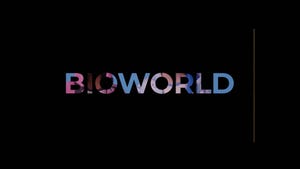]> Production, merchandising, and licensing company ShoPro Entertainment takes Japanese animation worldwide. "I couldn't say no-after all, how many people get
April 6, 2018

]>
Production, merchandising, and licensing company ShoPro Entertainment takes Japanese animation worldwide.

"I couldn't say no-after all, how many people get to play with toys and watch cartoons for a living?," responds ShoPro Entertainment Senior Vice President and Executive Producer John Easum when asked what brought him to ShoPro seven years ago. 
A production, merchandising, and licensing company servicing the Americas, Europe, and all corners of the world except Asia, ShoPro Entertainment also is an affiliate of ShoPro Japan, which, in turn, is a subsidiary of Shogakukan, Inc. (one of Japan's largest publishing companies). Easum worked at Mitsubishi for five years, then moved to France to study, received his MBA, and was recruited from graduate school to work for Case Corporation, where he put together global joint ventures for three years. ShoPro Japan headhunted him out of Paris to go to Japan to learn the industry and ultimately set up a company in the U.S. His initial responsibility was to help ShoPro Japan manage the master licensing program for Pokémon, as well as key international accounts, including Lucasfilm, Twentieth Century Fox, HIT, and Nickelodeon. Fluent in French and Japanese, Easum opened San Francisco-based ShoPro Entertainment in 2000, and currently handles TV sales and production. With 20-plus employees, privately held ShoPro Entertainment does not release any revenue figures. ShoPro Japan is a ¥55 billion ($507.6 million) company, according to its Website.
ShoPro Entertainment was founded with the objective of marketing and building ShoPro Japan's content on an all-rights basis worldwide, excluding Asia. According to Easum, ShoPro Entertainment's mission is to be the recognized industry leader in the cultivation, creation, development, and marketing of international entertainment brands by leveraging the collective strengths of brand creators, production partners, and broadcasters. For TV, ShoPro Entertainment currently represents five properties and for marketing, 10. ShoPro Japan produces and creates roughly 80 percent of ShoPro Entertainment's content. To date, ShoPro Entertainment has introduced animated entertainment series including Hamtaro, Inuyasha, MegaMan: NT Warrior, and Mirmo Zibang! to broadcasters and consumers worldwide. ShoPro Entertainment also was named North American licensing agency for $1 billion-plus licensing franchise Sonic The Hedgehog, which aims to leverage the video game, comic book, and television icon into a broad licensing and marketing program.
Most Japanese animation starts out in a comic book format. Through ShoPro Entertainment's relationship with Shogakukan, it has access to successful manga comic books, and it closely follows what programs have done well overseas. "We try to get involved as soon as a manga comic property is identified for television consideration," Easum says. "ShoPro Entertainment works to be part of the development process with our Japanese producers, so the shows will be more accessible to the international audience. We particularly try to provide guidance on content issues that may not be concerns in Japan, but could pose censorship issues in other parts of the world."
ShoPro Entertainment's strongest program from a revenue perspective and breadth of licensees is Hamtaro-with more than 30 licensees in numerous categories and seen on Cartoon Network, Easum says. According to a June 16, 2002, New York Times article, the Hamtaro movie, released in December 2001, generated $25 million, and Hamtaro-related products have generated $2.5 billion since the series had its television premiere in Japan in July 2000. "Another strong program is feudal fairy tale Inuyasha, where we have a successful licensing program in specialty and retail," Easum says. "MegaMan: NT Warrior also has been placed in all core categories with Mattel, Decipher, and Lollytogs leading the way with toys, trading cards, and apparel, respectively. MegaMan/Mattel currently is developing a PET product that comes with battle chips; to play the game, players will go to different retail outlets to gain access to different battle chips along with the purchase of a T-shirt and so on."
Going forward, Inuyasha will continue to build, Easum says, with a PS2 game in 2004, plus plans to introduce toys and trading cards, and the first Inuyasha movie coming in summer 2004. "We also have great expectations for Mirmo Zibang! [directed at girls ages 4 to 12 and boys ages 4 to 9, Mirmo is a comedy about a Muglox (fairy) and his human friend, the lovelorn Kaede], currently one of the hottest girls' shows in Japan. We plan to bring two new properties to the U.S., unveiling them at Licensing 2004 International Show: Gatch (called Gash Bell in Japan), which we hope to release in 2005, is currently one of the highest rated TV shows and one of the most successful trading card games in Japan; and Monkey Turn, which is a thrills and spills story about the competitive world of mini- speedboat racing."
One of Easum's favorite shows is Doraemon (a cat-type robot created September 3, 2112, Doraemon travels back in time with the great-great-grandchild of Japanese schoolboy Nobita to save him from the bad luck he creates for himself and his future descendents). "I also love Inuyasha. It's a rich and beautifully crafted story-Harry Potter, Crouching Tiger, and Lord of the Rings all wrapped up in a long-reaching story arc with motion-picture-quality animation," Easum says. "Gatch is another one of my favorites."
ShoPro's licensing strategy differs by property because of the different core demographics they target. "For Inuyasha, the demographic is young adult and older and, therefore, we want to reflect a different kind of 'cool factor' (for example, an exclusive with GameStop, Hot Topic, Musicland, and Waldenbooks)," Easum says. "Hamtaro, on the other hand, is a more mass-market, younger demographic, and, therefore, lends itself to a different licensing and marketing strategy. Sonic has a well-established 11-year video game history and a two-pronged approach: Sonic Classic and Sonic X [a joint production of SEGA Corp. and TMS Entertainment, Ltd.] on Fox Box."
ShoPro Entertainment holds licensee summits and has regular meetings with core licensees and retailers to discuss cross promotions and to enhance each other's initiatives. "We also have licensees visit Japan, often introducing them to the creators, as well as producers," Easum says. "Furthermore, we have creators or core rights holders in Japan visit the U.S. to meet with our licensees." Approval teams are trained for six months to a year in Tokyo to ensure a comprehensive review process of the licensing product development process, and they are deputized in Japan to represent the property in the U.S.
Looking ahead, ShoPro Entertainment will continue to represent ShoPro content from Japan, on an average of two to four new properties each year, according to Easum. "We then will identify which ones make sense for the international market. We also are bringing over content from other companies in Japan, not just ShoPro. Our immediate growth focus is the obvious: publishing, video games, toys, apparel, etc. In the long term, we would like to have additional properties, especially for girls."
You May Also Like






